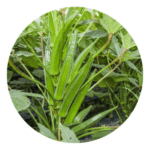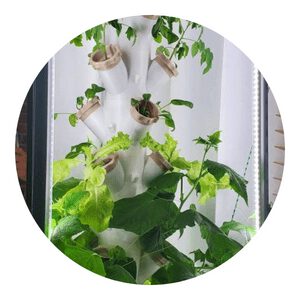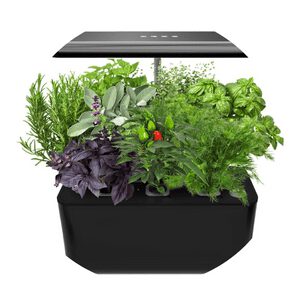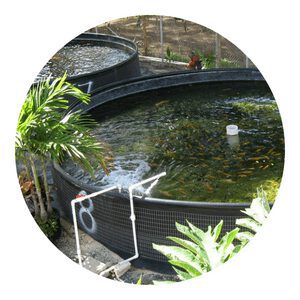How To grow Okra Hydroponically
Chappy the gardener has written a guide on how to grow okra hydroponically.
This is newsworthy because it is a new and innovative way to grow okra.
This guide will show you how to grow okra without soil, using only water and nutrients.
This is a cleaner and more efficient way to grow okra, and it yields better results.
Hydroponic Okra Menu
What is Okra?
Okra, also known as lady’s fingers or bhindi, is a flowering plant in the mallow family.
The edible part of the plant is the pod, which is typically green and cylindrical.
Okra has a mild flavor and a slightly slimy texture.
It is a popular ingredient in Southern U.S. cuisine, where it is used to make gumbo and other dishes.
What are the benefits of growing Okra hydroponically?
The main benefit of growing okra hydroponically is that it yields a higher quality product.
The lack of soil means that there is no chance for pests or diseases to contaminate the crop.
This results in a cleaner, healthier vegetable that tastes great.
How to grow Okra hydroponically?
Hydroponics is a method of growing plants without soil. The word “hydroponics” comes from two Greek words, “hydro” meaning water and “ponos” meaning labor.
So, literally, it means “working water.” In a hydroponic system, plant roots are suspended in a nutrient-rich solution instead of soil.
Grow Okra hydroponically and you'll have a bumper crop of this nutritious vegetable that's perfect for stew or soup. No soil is needed, just some water and some space for the plants to grow. With hydroponics, you can reap the harvest of fresh okra all year long!
Chappy The Gardener
Choose a Growing Medium
When it comes to hydroponic gardening, there are many different growing mediums to choose from.
Each has its own set of benefits and drawbacks. In this article, we will explore the benefits of using soil-less potting mix to grow okra hydroponically.
Soil-less potting mix is a great growing medium for hydroponic gardening because it is lightweight, porous, and holds moisture well.
It also provides good drainage, which is important for plants that require a lot of water like okra.
Another benefit of using soil-less potting mix is that it is sterile, so there is no risk of introducing harmful pathogens into your garden.
Select Your Seeds
Growing Okra hydroponically is a great way to get a steady supply of this tasty vegetable.
There are many different varieties of seeds you can choose from, so it’s important to select the right one for your climate and growing conditions.
Okra is a warm-weather crop that does best in areas with mild winters and long summers.
If you live in a colder climate, you’ll need to grow it in a greenhouse or use some type of heating system to keep the plants warm.
The best time to plant Okra seeds is late spring or early summer, when the weather is warm and humid.
Soil temperatures should be at least 65 degrees F (18 degrees C), and preferably higher.
You can start seeds indoors several weeks before transplanting them outside, or direct sow them into the ground once the danger of frost has passed.
Prep the Growing Area
Okra is a plant that is used in many dishes, and it can be grown hydroponically.
The first step in growing Okra hydroponically is to prepare the growing area.
You will need to create a platform for the plants to grow on. The platform should be about 12 inches high and 24 inches wide.
The next step is to add a layer of drainage material at the bottom of the platform. You can use rocks or gravel for this. Then, add a layer of soil.
Make sure that the soil is rich in nutrients and has good drainage.
Next, place the plants on top of the soil, making sure that they are spaced evenly apart.
Finally, water the plants and fertilize them regularly.
Plant the Seeds
Okra, a flowering plant in the mallow family, is cultivated for its edible green pods.
The plant is believed to have originated in Africa where it is still popular today.
Okra can be grown hydroponically and is a great choice for a beginner hydroponic gardener.
Care for Your Seedlings
Seedlings are a new beginning for your garden.
They are tiny plants that have the potential to grow into big, beautiful plants.
It is important to take care of your seedlings so that they can grow into healthy okra plants.
One way to take care of your seedlings is by growing them hydroponically.
Harvest Your Okra
As the weather starts to cool down, you may be looking for ways to extend your growing season.
Harvesting your okra can allow you to grow okra hydroponically.
Okra is a warm-weather crop that is typically harvested in late summer or early fall.
By harvesting your okra, you can extend your harvest season by several weeks.
Okra is a versatile vegetable that can be cooked in a variety of ways.
It is also high in fiber and vitamin C.
What supplies do you need
Water
Okra is a plant that is typically grown in warm climates. It can be grown hydroponically, which means that it does not need soil to grow.
This makes it a good choice for people who live in places where the climate is not warm enough to grow okra outdoors.
Okra is a good source of fiber and vitamin C.
Nutrients
Okra is a warm weather crop that is popular in the South. It can be grown hydroponically, but it does require some special nutrients. The most important nutrient for Okra is nitrogen.
Without enough nitrogen, the plants will not produce pods.
Other nutrients that are important for Okra growth include potassium, phosphorus, and magnesium.
pH meter
If you’re looking for a way to get into hydroponic gardening, or if you’re just looking for a new challenge, growing okra hydroponically is a great option.
While it may seem intimidating at first, with the right tools and instructions, you can easily create a pH meter to grow okra hydroponically.
This type of gardening is a great way to produce high yields of this nutritious vegetable with minimal space and effort.
Growing water container
This introductory paragraph will introduce the article on how to grow Okra hydroponically.
The process of growing Okra in a water container is explained, as well as the benefits of doing so.
It is hoped that readers will be encouraged to try growing Okra in this way, as it is a fun and easy way to produce this vegetable.
Tips for growing Okra hydropon
Okra is a vegetable that is typically grown in warm climates.
However, it can also be grown hydroponically, which means that it can be grown in a water-based system.
If you are interested in growing Okra hydroponically, here are some tips to help you get started.
The first step is to choose the right Okra variety for your climate.
There are many different varieties of Okra, and not all of them will grow well in your area. You should also make sure that you have enough space to grow the plants.
They need at least 2 square feet per plant.
You will also need to choose a suitable growing medium for your plants.
Many people use soil for their hydroponic gardens, but you can also use other materials such as coco coir or rockwool.
How many okra plants can I put in a 5 gallon bucket ?
If you are looking to grow okra in a hydroponic system, you will want to use a 5 gallon bucket.
You can plant up to 6 okra plants in a 5 gallon bucket hydroponic system.
Make sure to use a nutrient rich water solution and keep the pH level between 6 and 7.5.
In conclusion, growing okra hydroponically is a great way to get your green thumb on!
Not only is it easy to do, but it’s also a fun and rewarding experience.
If you’re looking for a way to produce your own fresh vegetables, then I highly recommend giving this guide a try.
Thanks for reading!
Click To Grow
Helps Us Grow – Share If You Like

















